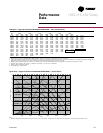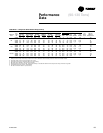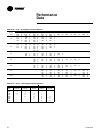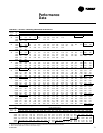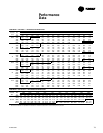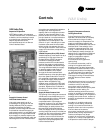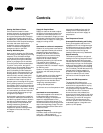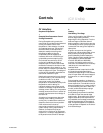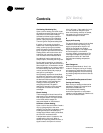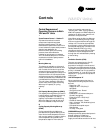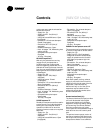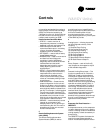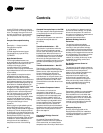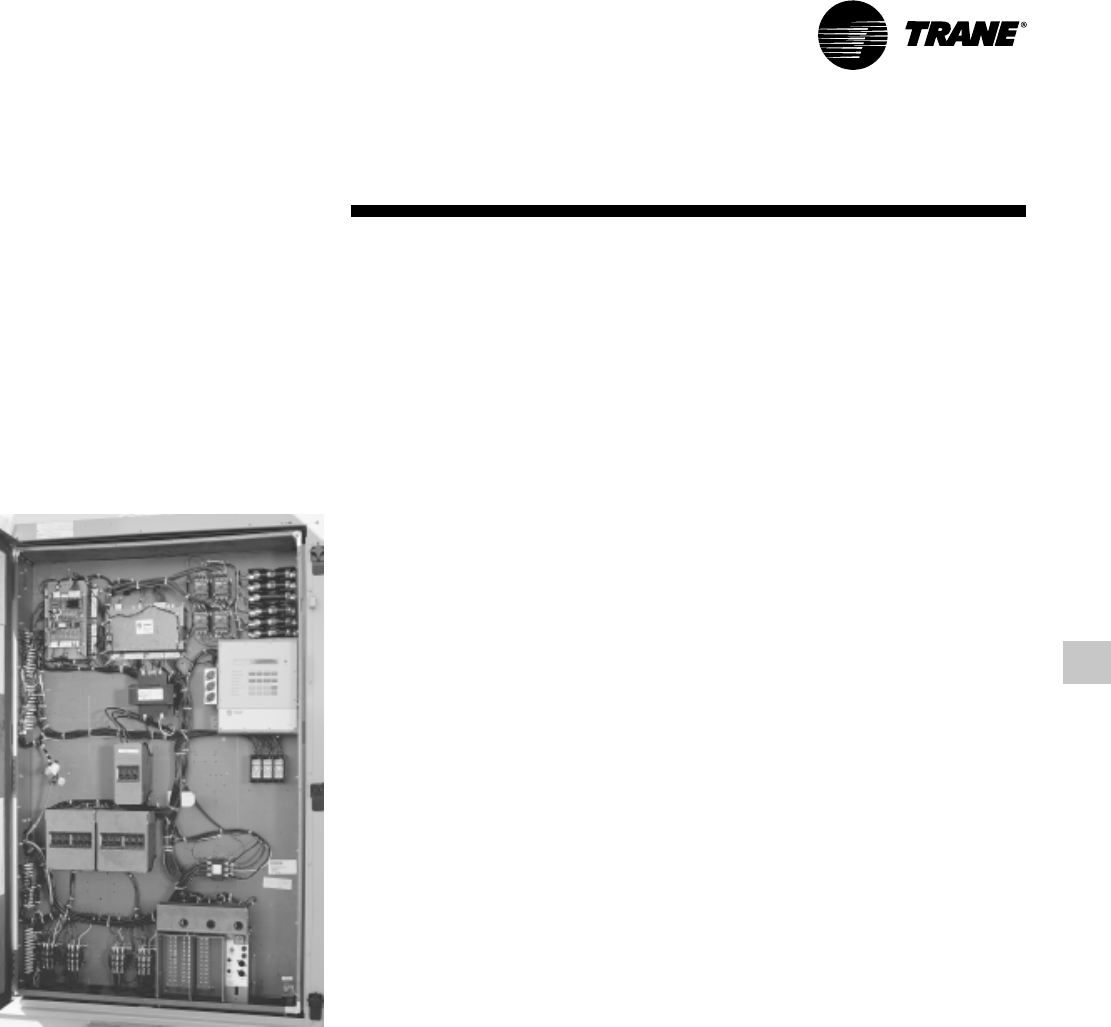
75RT-PRC010-EN
Controls
VAV Units Only
Sequence Of Operation
NOTE: When noted in this sequence
“Human Interface Panel,” the reference is
to both the unit mounted and remote
mounted Human Interface Panel. All
setpoint adjustments can be
accomplished at the unit or Remote
Human Interface Panel.
1
Supply Air Pressure Control
Inlet Guide Vanes Control
Inlet guide vanes are driven by a
modulating 0-10 vdc signal from the
Rooftop Module (RTM). A pressure
transducer measures duct static
pressure, and the inlet guide vanes are
modulated to maintain the supply air
static pressure within an adjustable user-
defined range. The range is determined
by the supply air pressure setpoint and
supply air pressure deadband, which are
set through the Human Interface Panel.
Inlet guide vane assemblies installed on
the supply fan inlets regulate fan
capacity and limit horsepower at lower
system air requirements. When in any
position other than full open, the vanes
pre-spin intake air in the same direction
as supply fan rotation. As the vanes
approach the full-closed position, the
amount of “spin” induced by the vanes
increases at the same time that intake
airflow and fan horsepower diminish.
The inlet guide vanes will close when the
supply fan is shut down, except during
night setback.
Variable Frequency Drive (VFD) Control
Variable frequency drives are driven by a
modulating 0-10 vdc signal from the
Rooftop Module (RTM). A pressure
transducer measures duct static
pressure, and the VFD is modulated to
maintain the supply air static pressure
within an adjustable user-defined range.
The range is determined by the supply
air pressure setpoint and supply air
pressure deadband, which are set
through the Human Interface Panel.
Variable frequency drives provide supply
fan motor speed modulation. The drive
will accelerate or decelerate as required
to maintain the supply static pressure
setpoint. When subjected to high
ambient return conditions the VFD shall
reduce its output frequency to maintain
operation. Bypass control is offered to
provide full nominal airflow in the event
of drive failure.
Supply Air Static Pressure Limit
The opening of the inlet guide vanes and
VAV boxes are coordinated during unit
start up and transition to/from Occupied/
Unoccupied modes to prevent
overpressurization of the supply air
ductwork. However, if for any reason the
supply air pressure exceeds the user-
defined supply air static pressure limit
that was set at the Human Interface
Panel, the supply fan/VFD is shut down
and the inlet guide vanes (if included) are
closed. The unit is then allowed to restart
three times. If the overpressurization
condition occurs on the third time, the
unit is shut down and a manual reset
diagnostic is set and displayed at the
Human Interface Panel.
2
Supply Air Temperature Controls
Cooling/Economizer
During Occupied cooling mode of
operation, the economizer (if available)
and mechanical cooling are used to
control the supply air temperature. The
supply air temperature setpoint and
deadband are user-defined at the Human
Interface Panel. If the enthalpy of the
outside air is appropriate to use “free
cooling,” the economizer will be used
first to attempt to satisfy the supply air
setpoint; then if required the mechanical
cooling will be staged on to maintain
supply air temperature setpoint.
Minimum On/Off timing of
the mechanical cooling prevents
rapid cycling.
On units with economizer, a call for
cooling will modulate the fresh air
dampers open. The rate of economizer
modulation is based on deviation of the
discharge temperature from setpoint,
i.e., the further away from setpoint, the
faster the fresh air damper will open.
First stage of cooling will be allowed to
start after the economizer reaches
full open.
Note that the economizer is only allowed
to function freely if one of the following
conditions is met. For dry bulb
economizer control the ambient
temperature must be below the dry bulb
temperature control setting. For
reference enthalpy economizer control,
outdoor air enthalpy must be below the
enthalpy control setting. For comparative
enthalpy economizer control, outdoor air
enthalpy must be below the enthalpy of
the return air.
At outdoor air conditions above the
enthalpy control setting, mechanical
cooling only is used and the fresh air
dampers remain at minimum position.
If the unit does not include an
economizer, mechanical cooling only is
used to satisfy cooling requirements.
Outdoor air dampers may be set
manually for a maximum of 25 percent
outdoor air, if rooftop is equipped with 0
to 25 percent manual fresh air damper.
(VAV Units)



